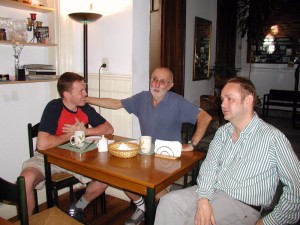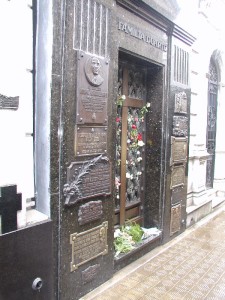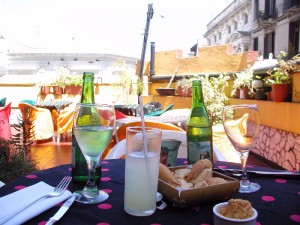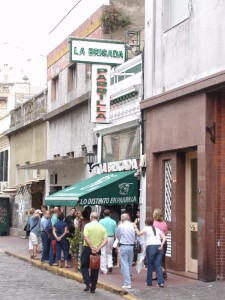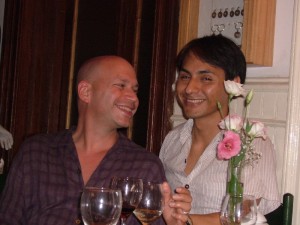Pizza in BA: An absolute must, have to, don’t miss, to die for
NEWS
June 18, 2006
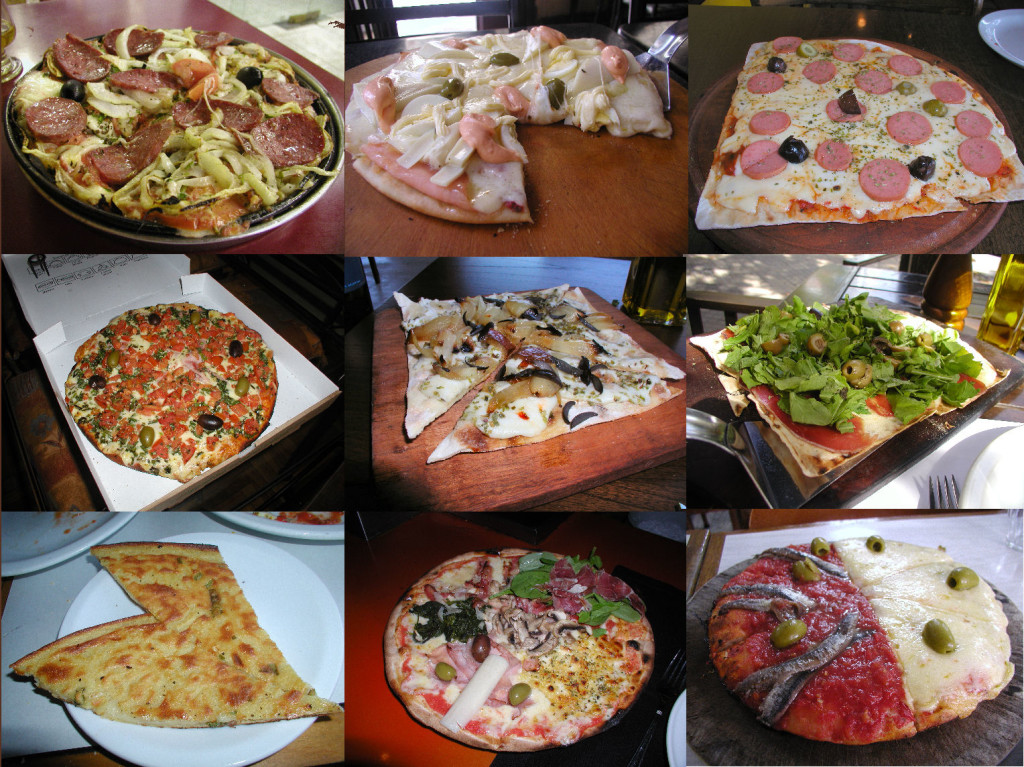
Pizza is one of those things that is easy to carry on about. We all have our likes and dislikes. Thin crust, thick crust, red sauce, white, cheese or no, and toppings from simple herbs to tuna and pineapple. Properly constructed, a pizza could be the illustration for the USDA’s food pyramid, with it’s grain-based crust, vegetable, meat, and dairy toppings.
Buenos Aires in particular, with its strong Italian-rooted population, and Argentina in general, offers up its own takes on Nature’s most perfect food. Locals can wax poetic and argue for hours over not only which pizzeria serves up the best pie, but whether pizza porteña tops New York, Chicago, or even Naples for quality. That’s not a debate I care to weigh in on, I prefer to think that everyone brings their own contribution to the table. Why limit yourself?
Pizza in Buenos Aires tends to show up in one of four guises. There are variations on the theme, with coal, wood, or gas fired ovens that produce differing results, and further variations on the former two with various types of charcoal and wood being used – for example, quebracha wood, a type of evergreen, being unique to many of the country’s ovens and grills. The most common of the four types is the pizza a la piedra, or pizza cooked on a stone. Generally a thin to medium thickness crust, this is probably the most familiar to folks from other places. Arguably the finest spot in Buenos Aires for this style is Güerrin, right by the Obelisk.
Pizza al molde, or pan pizza, is a favorite for many folk. A thicker crust, sometimes showing up a bit like just a thicker version of the piedra and sometimes a true deep-dish style – this can range from something similar to what we think of as “Sicilian” to classic “Chicago”. Though there are folks who would disagree, I think it would be near impossible here to beat Las Cuartetas, also near to the Obelisk.
Although not some new invention, as some folks here like to boast, pizza a la parrilla, or grilled pizza, is a relatively new introduction to the Capital. Cracker thin crusts, and given that most of the places serving it are sort of trendy new hotspots, often far more creative toppings than the norm, are the hallmarks of this style. There aren’t many places offering it yet, and the contenders to the throne don’t have a clear winner – Minna, in Puerto Madero Este; Morelia in Palermo Viejo; and Mamina in Liniers are clearly the top of the heap.
Buenos Aires’ unique contribution to the pizza world is the faina, a pizza, or focaccia, made of chickpea flour, the crust baked and usually served unadorned or with a simple herb or onion topping, as an accompaniment to a standard pizza. Though faina clearly comes from Liguria, where it is sometimes called farinata, (and there are versions throughout the Mediterranean – Gibralter’s “national dish” of calentita or Nice’s socca come to mind) – what makes it unusual is that here it is served as an adjunct to pizza – a “classic” porteño lunch is a a slice or two of pizza and a slice of faina – which is often laid atop of a slice of pizza as a sort of top-crust, or eaten in alternating bites – and a glass of cheap Moscato.

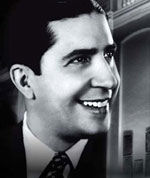
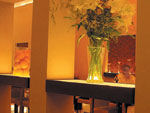
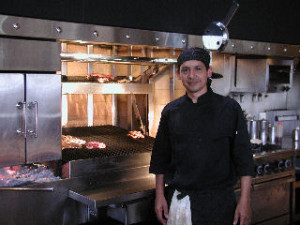
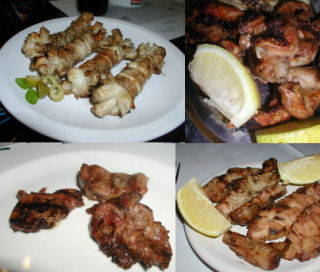
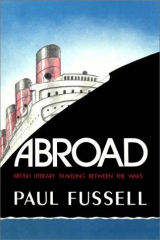 Buenos Aires – When I was departing New York back in January from my brief visit, my friend Frank handed me a few books he thought I’d enjoy. We do that. I left him one that I hadn’t. But then, that was all I had with me. I’ve been reading Abroad, by Paul Fussell, on and off since, not that it’s a long book, it’s more that it’s an odd book, and I had lots of other things going on. In the end though, it was a completely enjoyable and fascinating book. Mr. Fussell takes a look back at literary travel writing – in particular during the “golden age” of travel, between the two world wars. It’s sort of partly literary review and partly a bit of a travel book itself. I’m not going to say it’s action packed, but it definitely evokes some wonderful images of the world of travel via rail and ship and foot during that era. And if nothing else, I learned that the entire concept of passports and visas, is a very recent, 20th century invention of the British – in fact, the very first passports were issued only 91 years ago in 1915! Before then, one just sort of went where one wanted, often with little more than luggage and a little cash or a letter of credit. Think about that the next time you’re in a two hour long line at customs!
Buenos Aires – When I was departing New York back in January from my brief visit, my friend Frank handed me a few books he thought I’d enjoy. We do that. I left him one that I hadn’t. But then, that was all I had with me. I’ve been reading Abroad, by Paul Fussell, on and off since, not that it’s a long book, it’s more that it’s an odd book, and I had lots of other things going on. In the end though, it was a completely enjoyable and fascinating book. Mr. Fussell takes a look back at literary travel writing – in particular during the “golden age” of travel, between the two world wars. It’s sort of partly literary review and partly a bit of a travel book itself. I’m not going to say it’s action packed, but it definitely evokes some wonderful images of the world of travel via rail and ship and foot during that era. And if nothing else, I learned that the entire concept of passports and visas, is a very recent, 20th century invention of the British – in fact, the very first passports were issued only 91 years ago in 1915! Before then, one just sort of went where one wanted, often with little more than luggage and a little cash or a letter of credit. Think about that the next time you’re in a two hour long line at customs!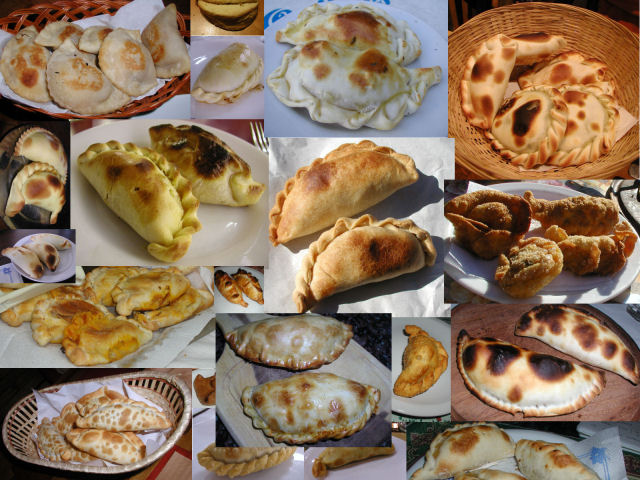
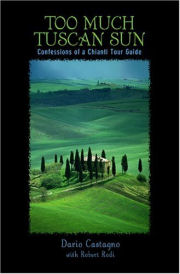 Back to the conversation, and my friend recommended that I pick up a copy of a relatively new book entitled Too Much Tuscan Sun: Confessions of a Chianti Tour Guide by Dario Catagno. So, I did, and it was my reading on the train back and forth to Lancaster over the last two days. Well, for me it was more of the same. The only difference is, it was told from the perspective of the local, talking about the tourists, rather than the other way around. But it still over-romanticizes Tuscany with long homages to grapes and olives and abandoned farmhouses and country roads, and from reading it you’d think that every local person is nothing but the most charming and interesting human to walk the face of the earth.
Back to the conversation, and my friend recommended that I pick up a copy of a relatively new book entitled Too Much Tuscan Sun: Confessions of a Chianti Tour Guide by Dario Catagno. So, I did, and it was my reading on the train back and forth to Lancaster over the last two days. Well, for me it was more of the same. The only difference is, it was told from the perspective of the local, talking about the tourists, rather than the other way around. But it still over-romanticizes Tuscany with long homages to grapes and olives and abandoned farmhouses and country roads, and from reading it you’d think that every local person is nothing but the most charming and interesting human to walk the face of the earth. 